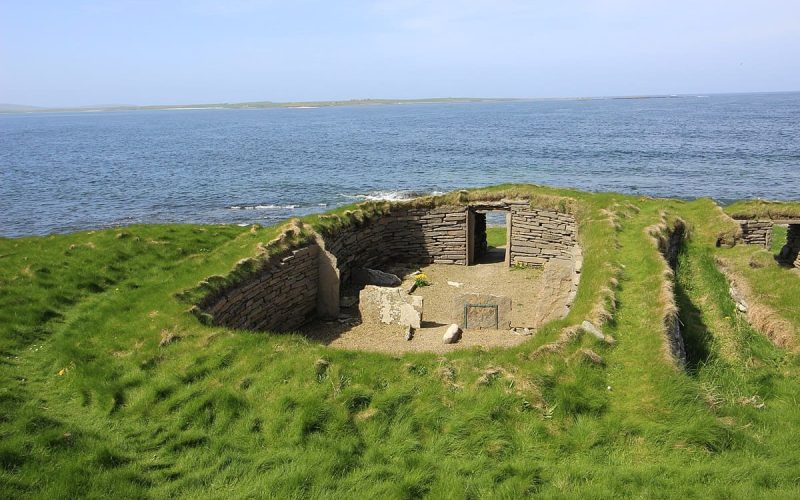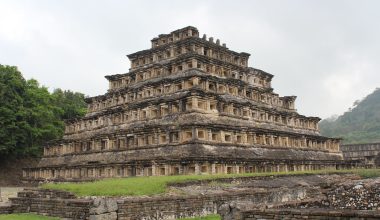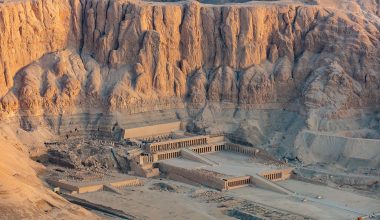Humans have learned the technique of modifying their surroundings to their advantage and that has led to the modern engineering marvels that we witness today. The ingenuity of the human mind can be found in old buildings that survive to this day. One can only imagine what kind of forethinking and human effort it would have taken without machines to build such structures. This does not contain structures that were not or could not be used for living by humans. Naturally, the pyramids of Egypt do not fall on this list then. Can you guess where the oldest surviving buildings in the world would be? Read on to find out more oldest buildings in the world,
Various historical and ancient buildings were constructed in our past. Each has its own story and significance. Though there are many ancient buildings present on Earth that are still intact the oldest ones are mentioned below. Here is the list of the top 25 oldest buildings in the world,
Oldest Buildings in the World
1. Göbekli Tepe
Located in south-eastern Turkey, this site dates back to 8000 BCE. However, it was rediscovered only in 1963 during a survey conducted by Klaus Schmidt, a German archaeologist. The secrets of Gobekli Tepe still lie hidden as only 5% known area has been excavated. The main excavation features a circular building with standing pillars. Made of solid stone which is ornated with carvings of animals. This gives us an insight into what kind of animals inhabited this region. The animals include serpents, foxes, boars, gazelles, and birds like ducks and vultures. Other objects found at the site are small carved stones with similar beings carved on pillars.
Also Read: Top 10 Most Famous Domes Of The World

Image Source: Wikimedia
2. Tower of Jericho
This is a stone building from the Middle East. Estimated to be around 10,000 years old. These works were found from 1930 to 1936. The structure is built of stones and has a staircase of twenty steps. The tower at the bottom is 9 meters in diameter and 7 meters at the top with the total height being 8.5 meters. The purpose of the tower has been questioned for many years now. Since there is no human remains in the area and there were no wars in the region in that time period a defense tower is meaningless. It also couldn’t be a tomb since there are no burials in the area. New research suggests the astronomical purpose of the tower while others simply say it was a community building.
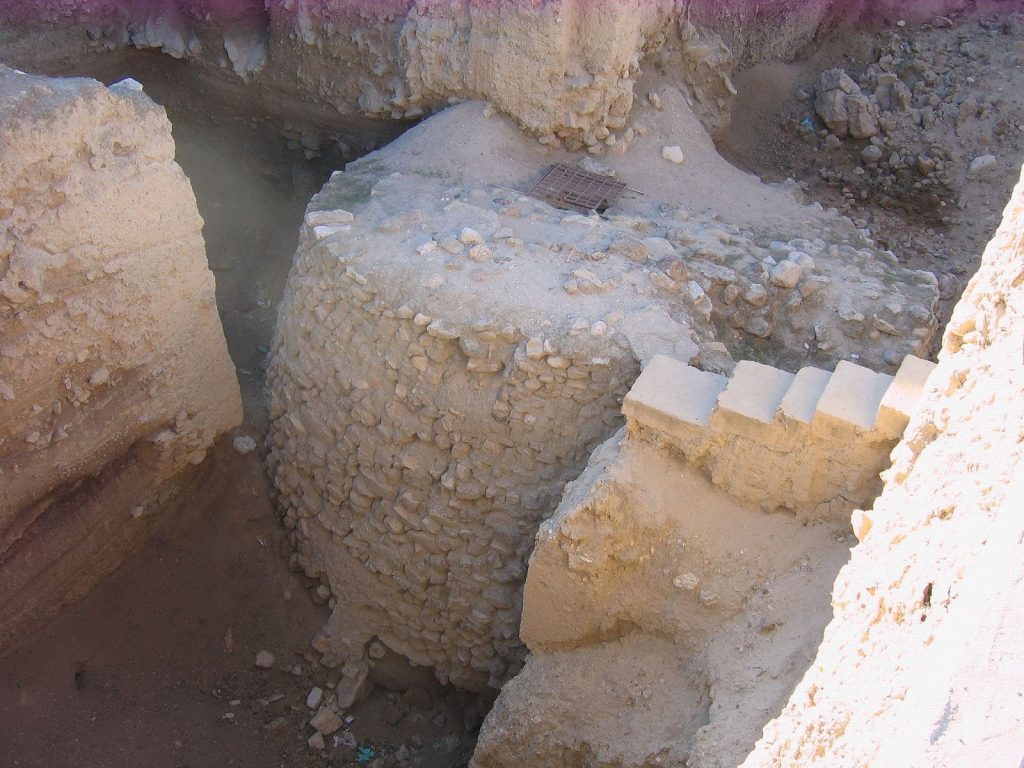
Image Source: Wikimedia
3. Çatalhöyük
Located in South Central Turkey, this place was discovered by an English archaeologist James Mellaard in ’58. The city was built in successive layers over millennia and was eventually abandoned in 5600 BCE. The city was interesting in that the roofs of the houses were used for daily activities and were continuous and connected creating an entire new level of city above the ground. There were only houses and no community buildings. There weren’t even any footpaths or roads connecting the houses on the ground. Due to its immense importance to archaeology, the site was declared a UNESCO World Heritage Site.
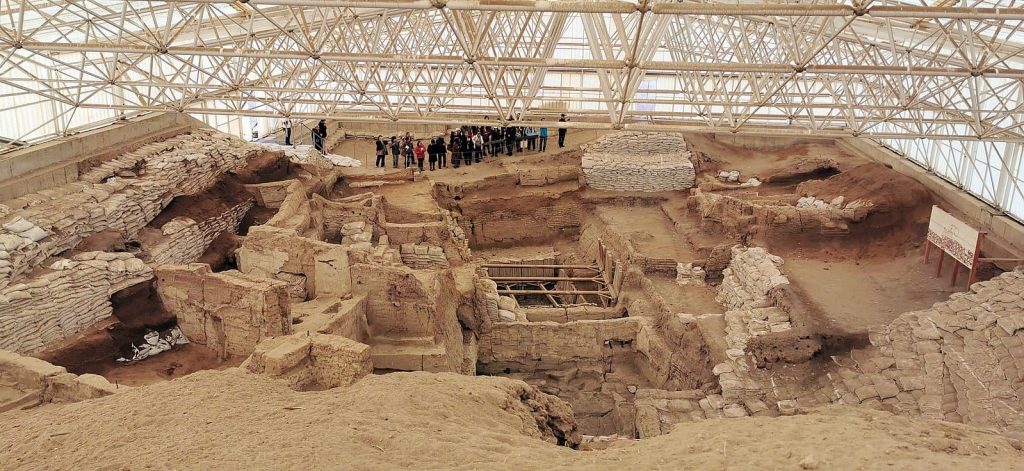
Image Source: Wikimedia
4. Mehrgarh
This settlement dates as far back as 7000 BCE and is the oldest settlement found to date in the Indian subcontinent. The site is located in Pakistan, west of the Indus River. While the earlier thinking was that this settlement developed with cultural exchange and migration from the eastern settlements, many scholars now argue for an independent origin of the site. The people were farmers and herders. The site dates back to an aceramic age when even pottery didn’t exist. However, this wasn’t a lonely town in the corner of the world. Many statues and figurines and stone axes and even ornaments made of lapis lazuli have been found here. This means that these people were pretty engaged in trade with the world.
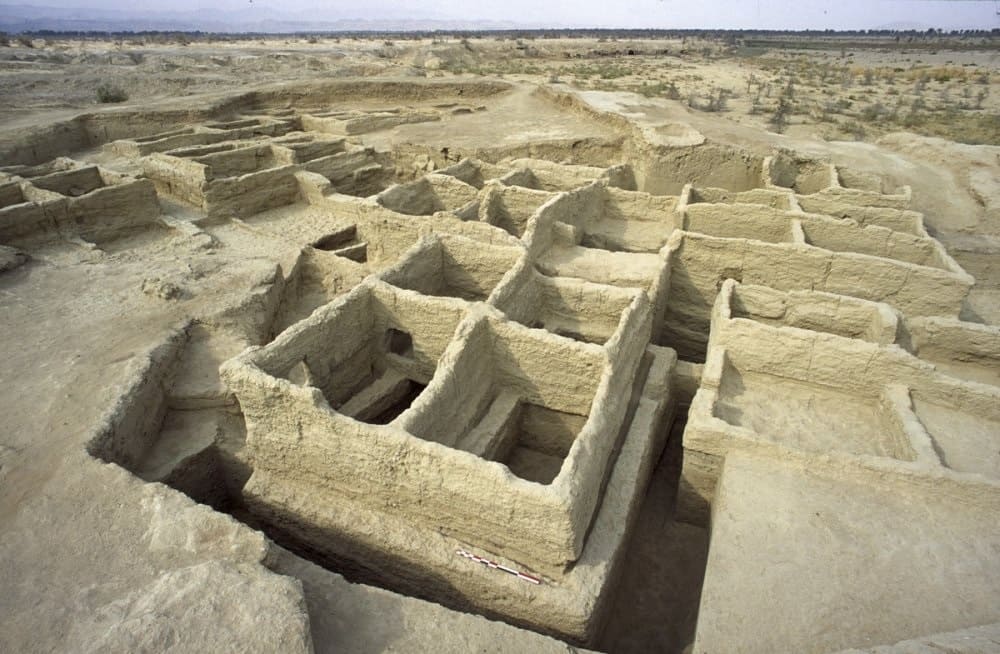
Image Source: Wikimedia
5. Anu ziggurat of Uruk
This building is located in what is known in modern times as Warka in Iraq. You’d find this mud-bricked temple atop a remote hill in the vast plain. This was a white temple dedicated to the sky god and at the time of its construction was located in the center of civilization in southern Mesopotamia. This structure which in its time stood over 40 feet in the plain dates back to 4000 BCE. The structure was cubical on top of a raised platform with sloping sides called the ziggurat.
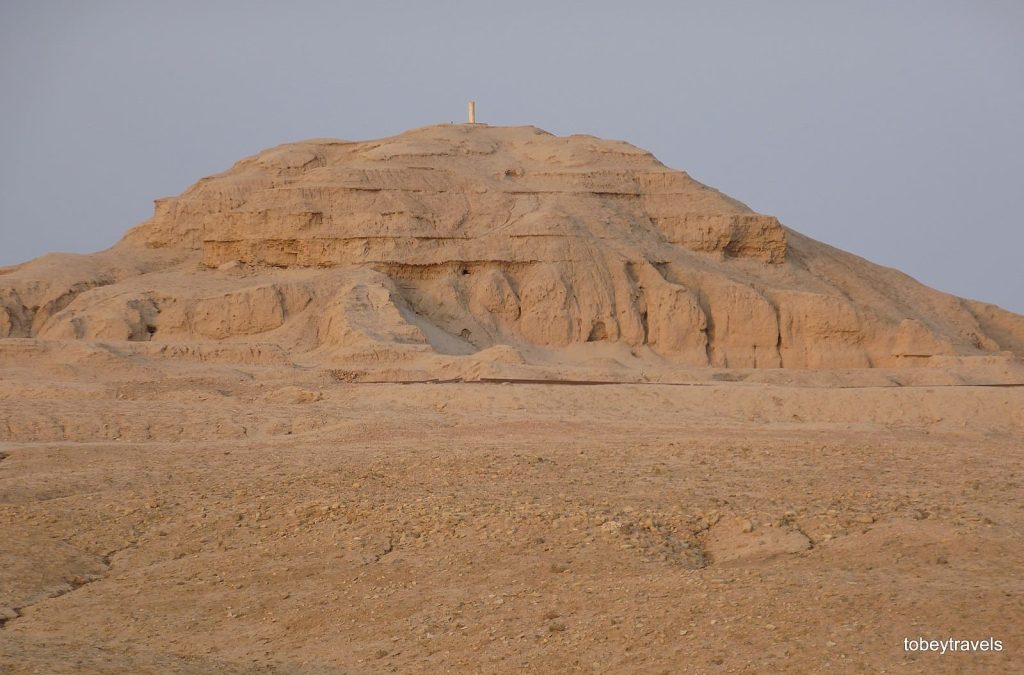
Image Source: Wikimedia
6. Barnenez
The Cairn of Barnenez also known as Barnenez is one of the oldest buildings in the world dating back to 4850 BC. This is also one of the earliest megalithic monuments in Europe and is believed to have one of the oldest man-made structures in the world. The building is also famous for its megalithic art. The radiocarbon technique indicates that the first phase of the monument was erected between 4850 and 4250 BC, however, the second phase was between 4450 and 4000 BC.
The Cairn of Barnenez is located in Northern France in Brittany. This monument dates back to Neolithic times in 4800 BCE although it was later reused in the bronze age. A surprising fact is that due to a lack of awareness, this cairn was used as a quarry for stones until 1950! It may be unfortunate but it also points to the design of the cairn. This mammoth construction is made of about 14 thousand tonnes of stones and is 72 by 25 meters in dimensions and 8 meters in height. The chambers in the mound contain symbols that are common among other buildings of that found in the region suggesting an earlier use of signs and symbols.
Also Read: Top 10 Oldest Temples In The World
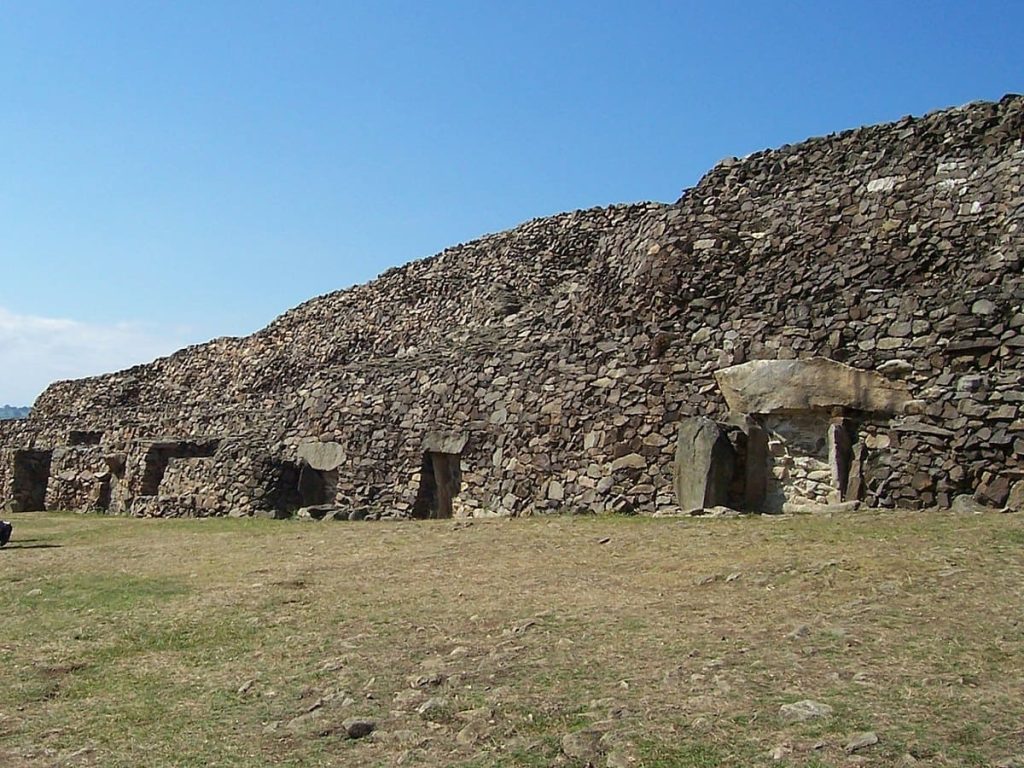
7. Tumulus of Bougon
Discovered in 1840, the Tumulus of Bougon is also acknowledged as the Necropolis of Bougon. Built by Neolithic people for burying people at that time, the Tumulus of Bougon represents the history, lifestyle, cultures, traditions, and funeral methods of that period.
With the presence of stones and earth’s material graves in the form of six spherical and long monumental structures called tumuli, the Tumulus of Bougon depicts the art culture of the world of that time. Divided as Tumulus A, B, C, D, E, F, Tumulus F with 72 meters long length earns the position of the largest one.
Again from France, this historical building belongs to the Neolithic age and has been dated back to 4800 BCE. The importance of this site was realized in 1840 and thankfully it was not used for quarry. This tumulus or mound-like structure is circular with two steps on the outside. Inside there is a chamber which when this was discovered in 1840 housed about 200 skeletons! This was most probably a burial site and evidence shows usage over multiple eras.
Also Read: Top 10 Most Amazing Pyramids in Mexico
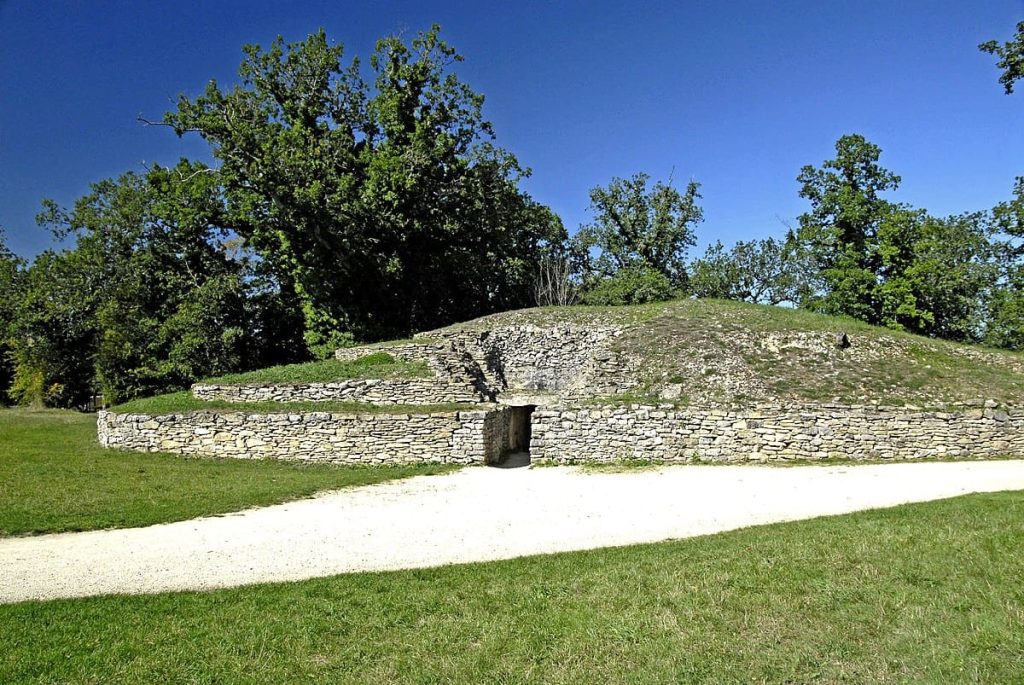
Image Source: Wikimedia
8. Tumulus Saint-Michel
Built in the 5th century, Tumulus Saint-Michel is located in Carnac, France. Being the largest funeral site in Europe, Tumulus Saint-Michel is 10 m in height and 125 m in length. In 1862, various prestigious items like stones, pearls, tools, chests, axes, and many other articles were found there.
National Heritage Site declared it a Monument Historic in 1889. With amazing weather and nature, this area is quite beautiful and gives an incredible view. To reach this spiritual and amazing place one needs to walk many steps to reach Tumulus. Big chambers and historic tombs are now gated and can’t be visited.
Also Read: 10 Most Famous Prehistoric Cave Paintings
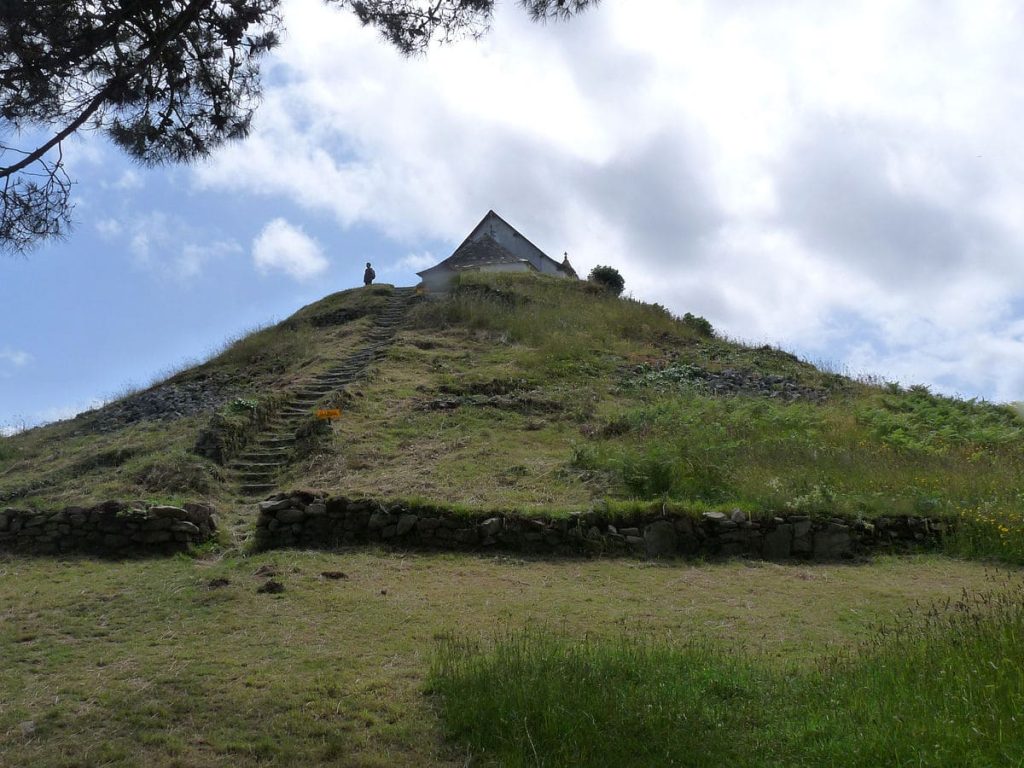
Image Source: Wikimedia
9. Altare prenuragico di Monte d’Accoddi
Monte d’Accoddi is an archaeological site situated in northern Sardinia that comes in the territory of Sassari. The site has a large structure that is considered one of the oldest buildings in the world. It is belived that the structure was constructed by the Ozieri culture dating back to 4,000–3,650 BC. The building was partially constructed during the 1980s and it is open to the public now. The site was discovered in 1954 in a field owned by the Segni family.
This building is from the Neolithic age in northern Sardinia. This too was placed on top of a raised platform made of stone. This building was constructed in two eras with the older one dating back to 4000 to 3650 BCE. Then the older one was covered and built on again in the period from 3500 to 3000 BCE. This made a stepped pyramid shape that remains to this day.
Also Read: Top 10 Most Famous Monuments Of Ancient Egypt
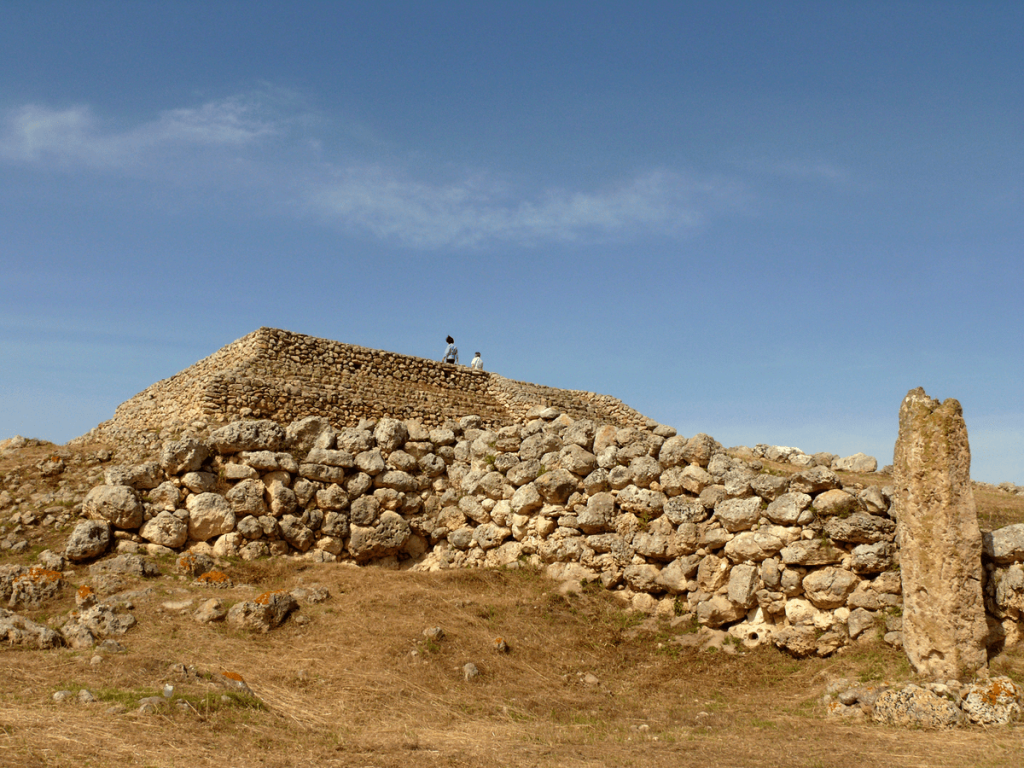
Image Source: Wikimedia
10. Knap of Howar
Built-in around 3600 BC, Knap of Howar is known to be the building of the Iron Age with two houses made of stones and was known to serve as a home for some Neolithic families. With 1.6 meters high walls, the Knap of Howar was believed to be the most ancient dwelling in Europe and was used till 3100 BC.
The removal of sand and stacks led to the discovery of the Knap of Howar which has two houses among which one is large and one is small. According to estimations, a small one must be a working place. With the presence of thick stone walls, beds, fireplaces, stone closets, and stone slabs, these sea-facing structures were extremely unique.
Situated on the island of Papa Westray in Scotland, this building was a house (yes not another burial mound finally!). Dating shows signs of occupation from 3700 BCE to 2800 BCE. This site consists of two sea-facing houses having stone walls on the outside and the two are connected by a narrow passageway. Today they are quite close to the sea, but when they were built the sea would have been at quite some distance. Today it doesn’t have a roof but it was probably a thatched roof made of wood and grass.
Also Read: 10 Most Amazing Ancient Egyptian Temples
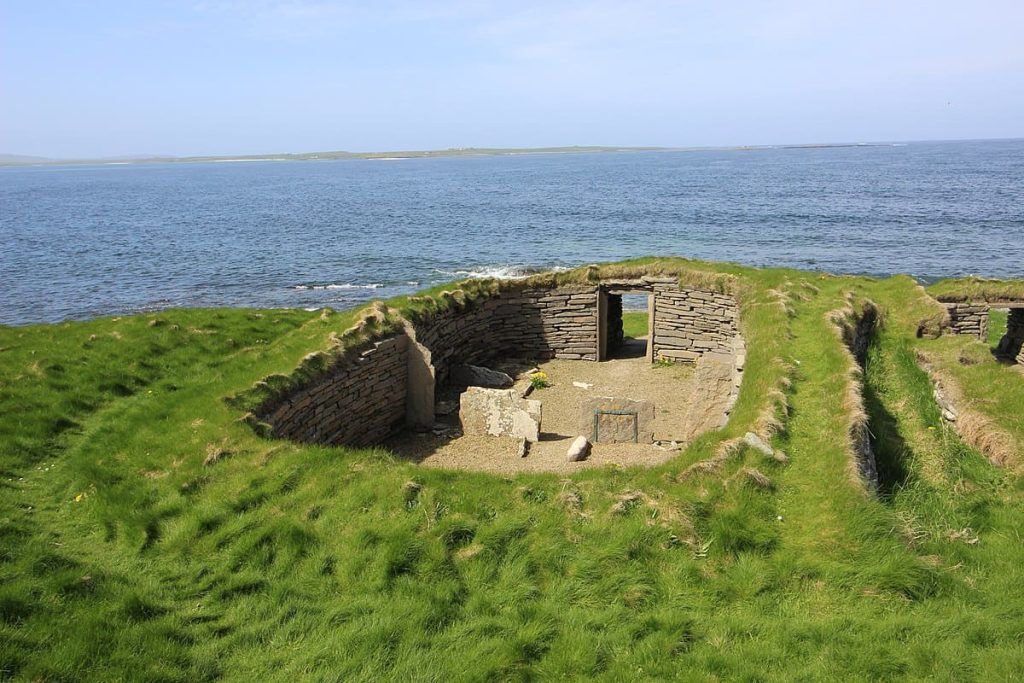
Image Source: Wikimedia
11. Ggantija temple
Found on the island of Gozo in Malta, the Ggantija temple is the earliest in Malta and is even older than the pyramids of Egypt. It is the world’s second-oldest religious monument after Gobekli Tepe. Being one of the oldest includes it is a world heritage site by UNESCO. Created using limestone, this temple was created between 3600 and 3200 B.C. The wall’s decorative slabs, paintings, and doorways are well-preserved and are worth watching.
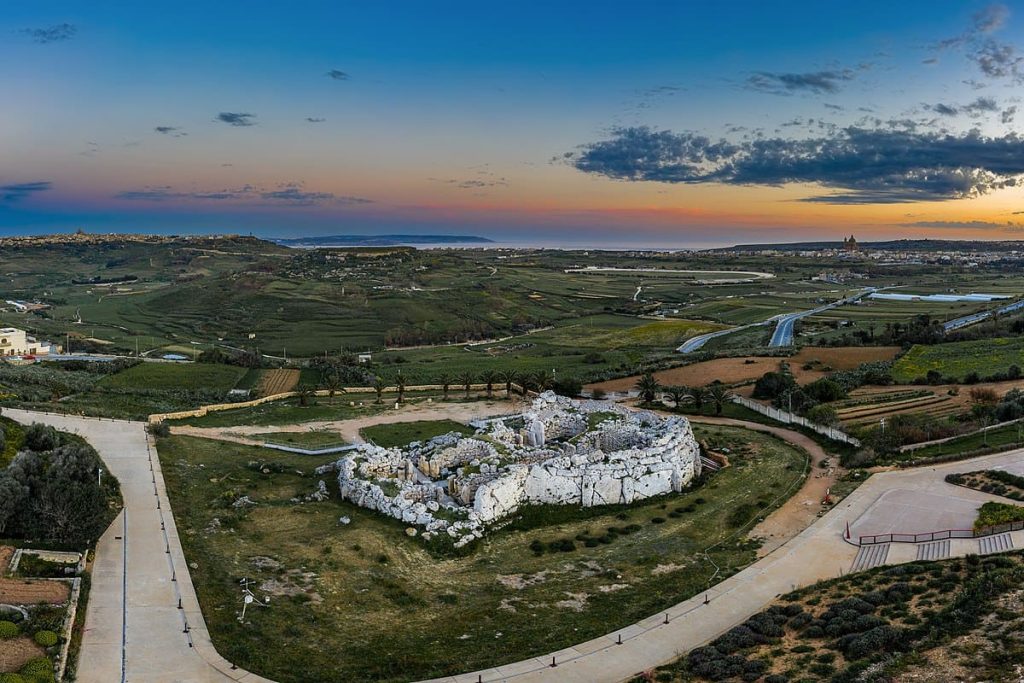
12. West Kennet Long Barrow
The West Kennet Long Barrow popularly known as South Long Barrow was constructed back in the thirty-seventh century BC which is belived to be Britain’s Early Neolithic period and today it is surviving after several reconstructed states. According to Archaeologists, the structure was constricted by the pastoralist communities shortly after the introduction of agriculture to Britain from continental Europe. One of the oldest buildings is 100 meters long and 20 meters wide.
Also Read: Top 10 Most Beautiful Lost Cities
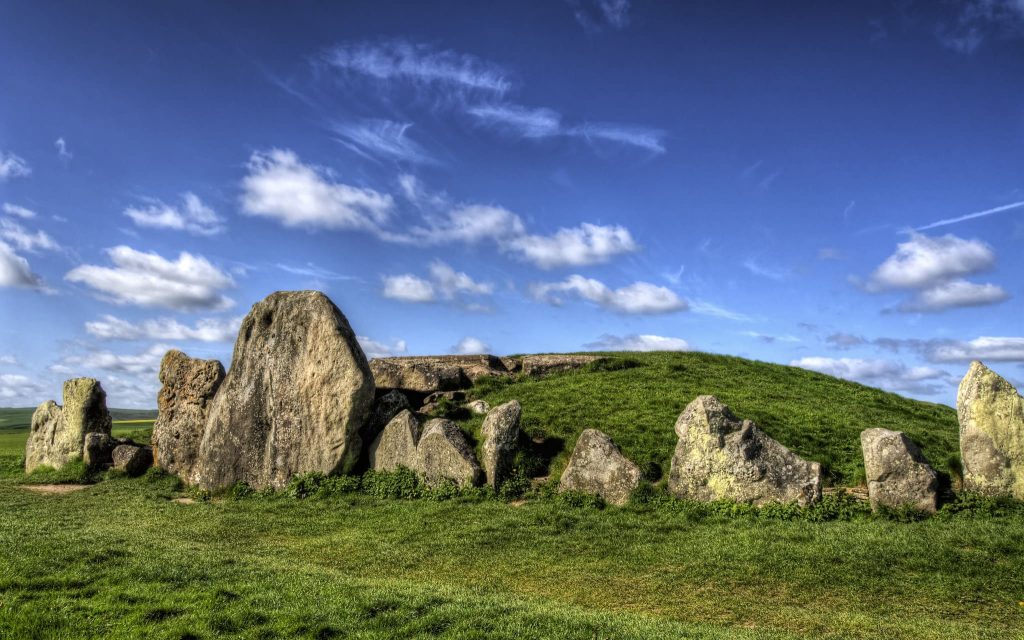
Image Source: Neil Howard
13. Listoghil
Listoghil is a prehistoric tomb situated in the County of Sligo in Ireland. The site was excavated in 1990 and this is considered as the largest passage grave site in Ireland spanning an area of 1.5 sq. miles. The covering stone of the site has a diameter of 110 feet and the site was initially destroyed by the quarry workers extracting road material before realizing the existence of an ancient tomb. The best part is that the sunlight enters the passage and lightens it till the end which is common in the Neolithic structures across the world.
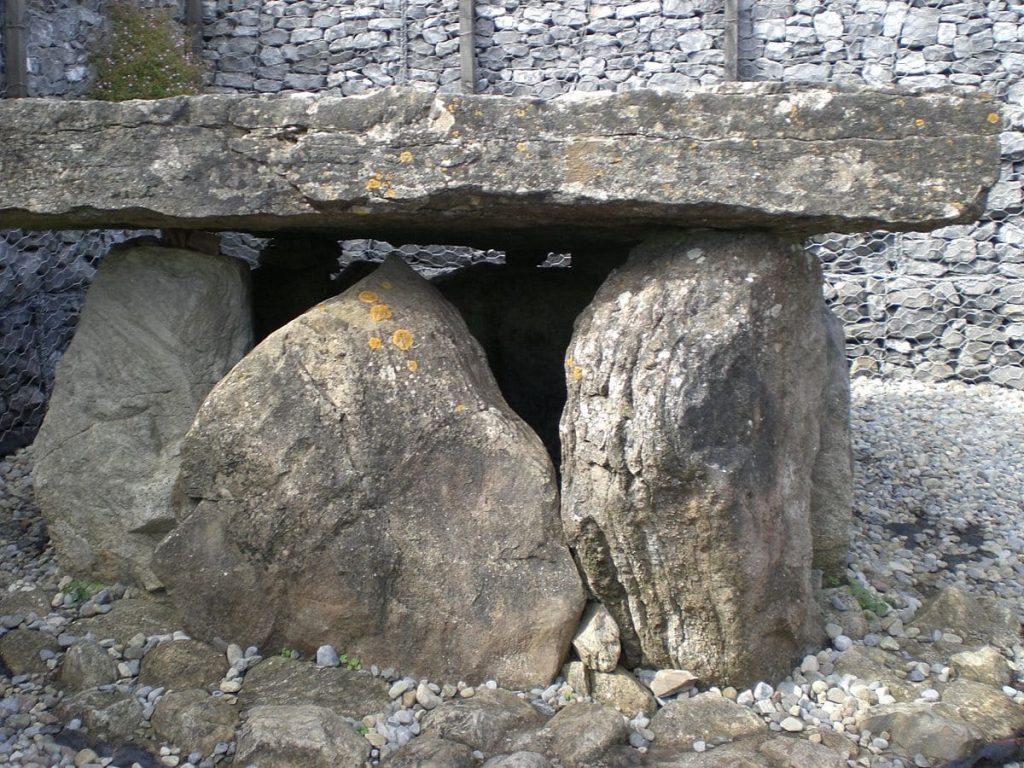
Image Source: Wikimedia
14. Sechim Bajo
Sechin Bajo is one of the oldest buildings in the world situated in the Western Hemisphere. The large archaeological site is also considered one of the oldest centers of civilization on planet Earth. It is located in the valley of the Sechin River which is 12 kilometers (7.5 mi) from the Pacific Ocean and about 330 kilometers (210 mi) northwest of Lima, Peru. The site was founded in 2008 and dates back to 3500 BCE to 1300 BCE and is considered one of the oldest settlements on the American continent.
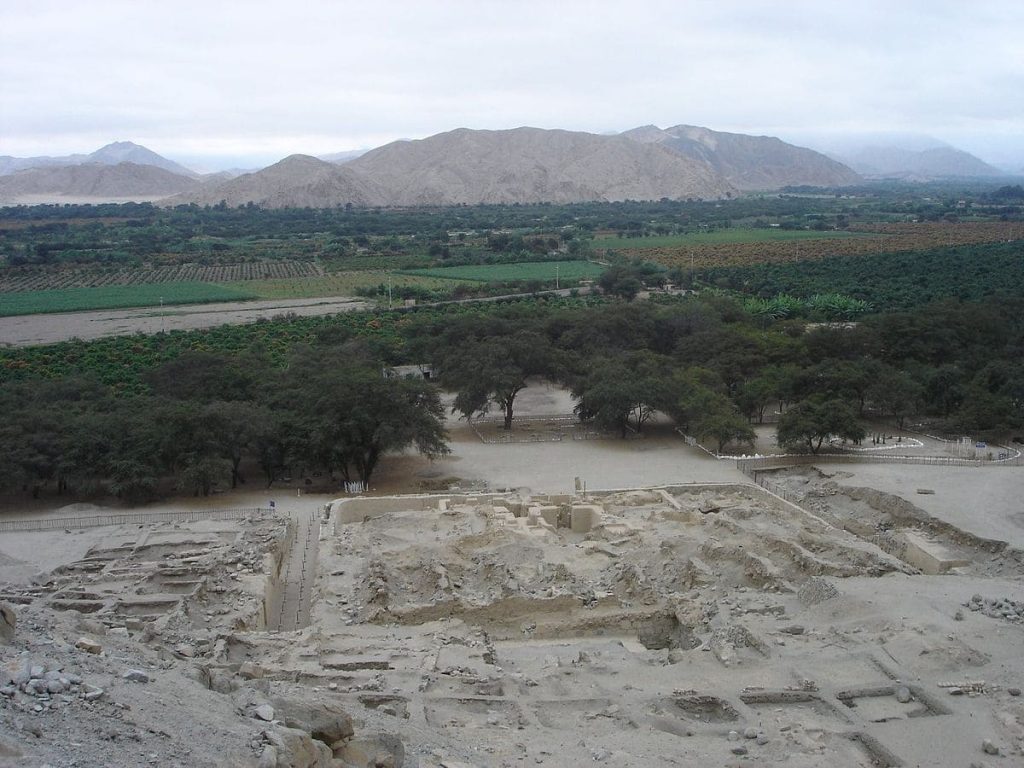
Image Source: Wikimedia
15. La Hougue Bie Museum
Nearly, 5000 years ago, La House Bie Museum is an ancient museum in Jersey and is one of the oldest buildings in the world. Being rich in historical facts, this place is so mysterious and unforgettable and is a major tourist attraction today. Some believe that the name La House Bie Museum is in honor of Hambye.
Constructed as a grave, La House Bie Museum was used both as a grave and a living habitat by the people of Jersey. Connected to various historical and ancient customs and rituals, this place is very sacred. The peaceful surroundings there along with the rays of sun enlightening the place make La House Bie Museum so beautiful.
Located in Jersey in the Channel Islands of France, this well-preserved structure dates back to 3500 BCE and is perhaps five centuries older. This was an earth mound that had a narrow long passage to a chamber and was used for ritual burials as remains and burial goods were found at the site. This structure has been in use intermittently throughout history and even has two medieval chapels built atop it.
Also Read: Top 10 Best And Most Popular Historical Periods
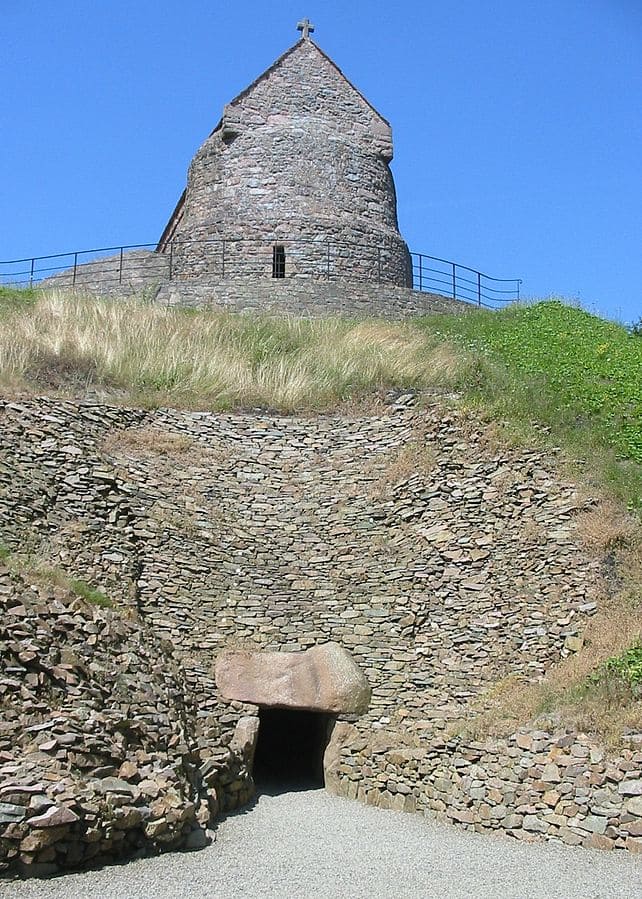
Image Source: Wikimedia
16. Palace of Knossos
Located in Knossos, Crete, Greece, the Palace of Knossos served as the focal point for the Minoan civilization, thriving on the island from approximately 2000 to 1400 BC. It is one of the oldest temples in the world, acting as both an administrative and political hub, and boasts an extensive complex featuring a central court, a throne room, a royal residence, and various smaller rooms and corridors. Its architectural brilliance is highlighted by sophisticated elements like frescoes, columns, and purposeful storage spaces. Revered for its intricate design, the Palace of Knossos stands as a testament to the advanced civilization that once flourished on the island of Crete, showcasing the Minoans’ cultural and architectural achievements.
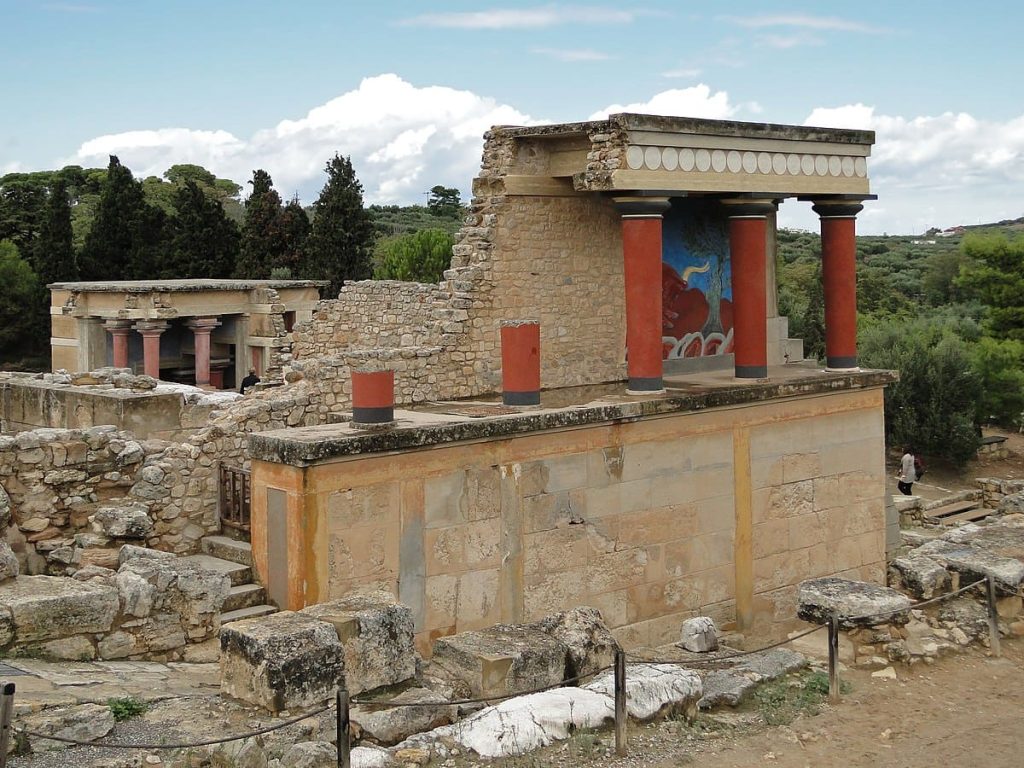
17. Su Nuraxi in Barumini
One of the oldest buildings in the world found in Barumini, Sardinia, Italy, Su Nuraxi represents a pre-Nuragic archaeological site constructed by the Nuragic civilization between the 16th and 13th centuries BC. This complex of ancient structures stands as a testament to the historical presence of the Nuragic people on the island of Sardinia. Acknowledged as a UNESCO World Heritage site, Su Nuraxi is esteemed as one of the most pivotal instances of Nuragic architecture in Sardinia. Its significance lies not only in its age but also in the cultural and historical insights it provides, offering a glimpse into the architectural prowess and societal aspects of the ancient Nuragic civilization.
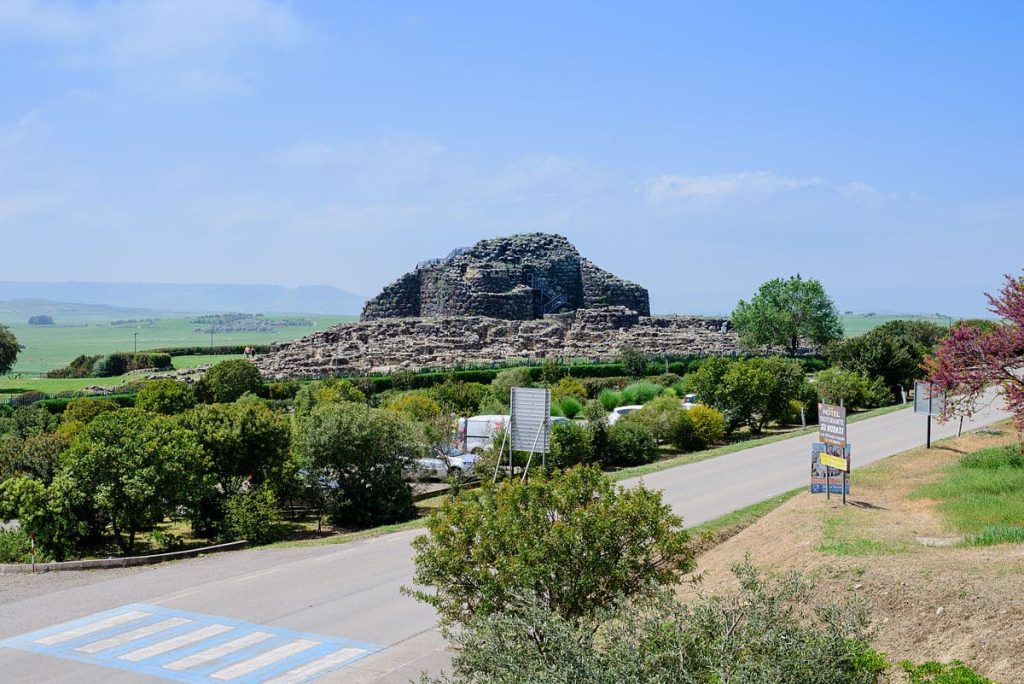
Image Source: Wikimedia
18. Pyramid of Djoser
The Step Pyramid, or Pyramid of Djoser, situated in Saqqara, Egypt, dates back to the 27th century BC, crafted during the Third Dynasty for Pharaoh Djoser. As the second dynasty king, Djoser’s pyramid stands as a pivotal exemplar of early Egyptian pyramid construction. Recognized as the world’s oldest intact stone structure, the Step Pyramid is a testament to the ancient architectural prowess of the Egyptians. Its significance extends beyond its antiquity, offering valuable insights into the early phases of pyramid development, and contributing to the rich tapestry of Egypt’s historical and cultural heritage.
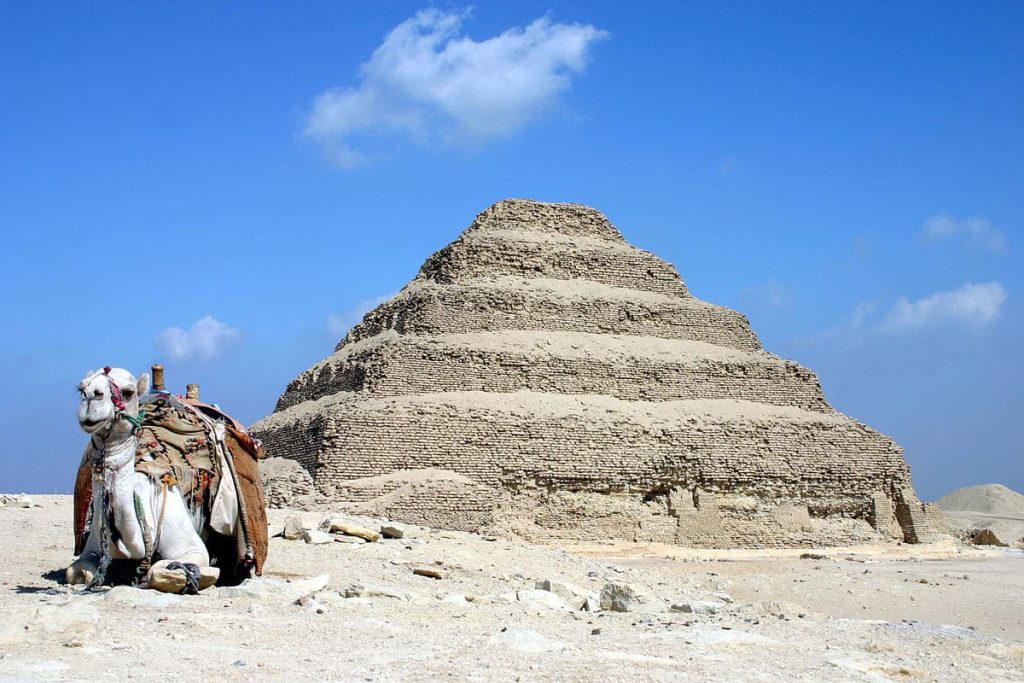
Image Source: Wikimedia
19. Karnak
Located in Luxor, Egypt, Karnak stands as an immense and ancient temple complex, renowned globally as a monument of ancient Egypt for its colossal scale and rich history. Constructed over a span exceeding 2000 years, the complex boasts a remarkable array of temples, chapels, towers, and various structures. Devoted to the deities Amun, Mut, and Khonsu, Karnak served as a prominent center of worship during ancient Egyptian times. Its fame rests on the grandeur of massive columns, obelisks, and other architectural marvels. Additionally, well-preserved reliefs and inscriptions within Karnak unravel the intriguing tapestry of ancient Egyptian culture and history, providing invaluable insights into the civilization’s past.
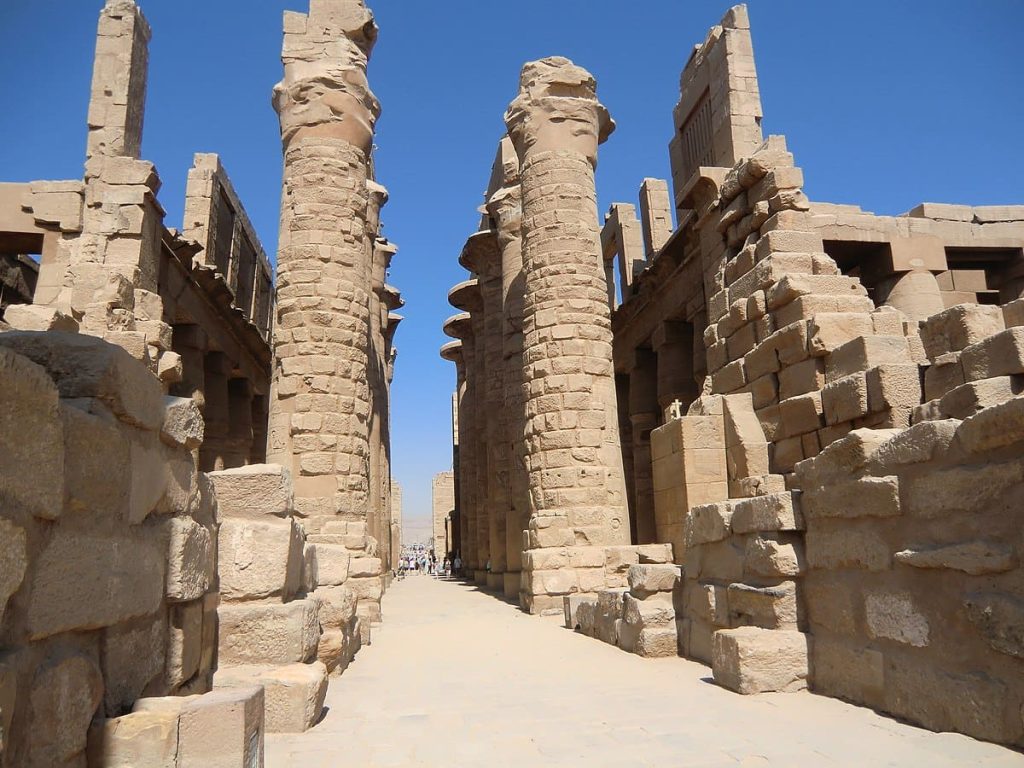
20. Newgrange
Newgrange, situated in Boyne Valley, County Meath, Ireland, stands as a renowned Neolithic passage tomb and a prominent prehistoric site. Erected around 3200 BC, it ranks among the world’s oldest structures. Initially intended for burial and ceremonial functions, its distinctive feature is the passage tomb—a lengthy tunnel guiding to a burial chamber. Notably, the monument’s alignment holds significance; during the winter solstice, the sun’s rays penetrate a roof box, brilliantly illuminating the burial chamber. Newgrange’s enduring mystique lies not only in its ancient origins but also in its celestial connection, highlighting the advanced astronomical awareness of its Neolithic builders.
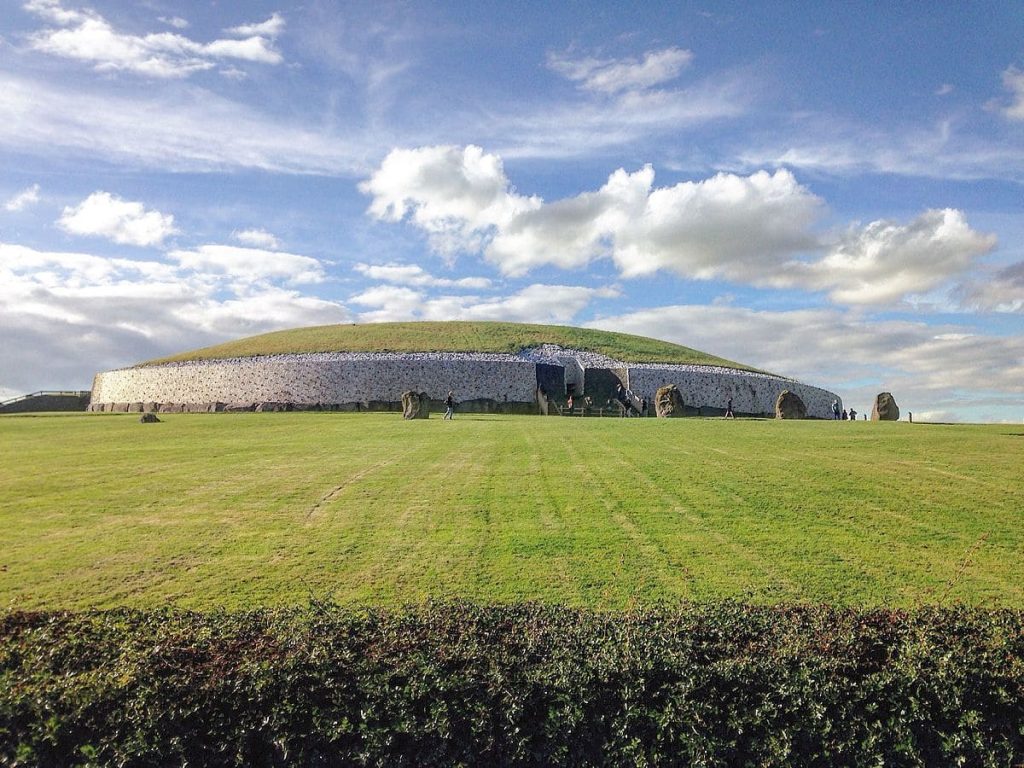
Image Source: Wikimedia
21. Van Fortress
Van Fortress, alternatively referred to as Van Castle or Van Citadel, stands as a medieval castle situated in Van in eastern Turkey. Originating in the 9th century, it was erected by the Kingdom of Van, a formidable Armenian realm that held sway over regions spanning present-day Turkey and Iran. Serving dual roles as a defensive bastion and the kingdom’s capital, the fortress boasts a multifaceted design incorporating walls, towers, and various courtyards. Its complex layout accommodates diverse structures within, marking it as a testament to the strategic importance and historical significance of the Kingdom of Van in the medieval era.

Image Source: Wikimedia
22. Megalithic Temples of Malta
One of the oldest buildings in the world found in the Maltese Islands, the Megalithic Temples is a collection of ancient structures, dating back to the Neolithic period (4000-2500 BC). It makes them among Europe’s oldest and most significant archaeological sites. Constructed from stone, these temples boast substantial size and intricate design, comprising chambers, passages, and courtyards dedicated to ritual and ceremony. Adorned with carvings and sculptures, these temples held a central position in the religious and social practices of ancient Maltese communities. Their enduring presence stands as a testament to the rich history and cultural significance that these megalithic structures held for the people of ancient Malta.
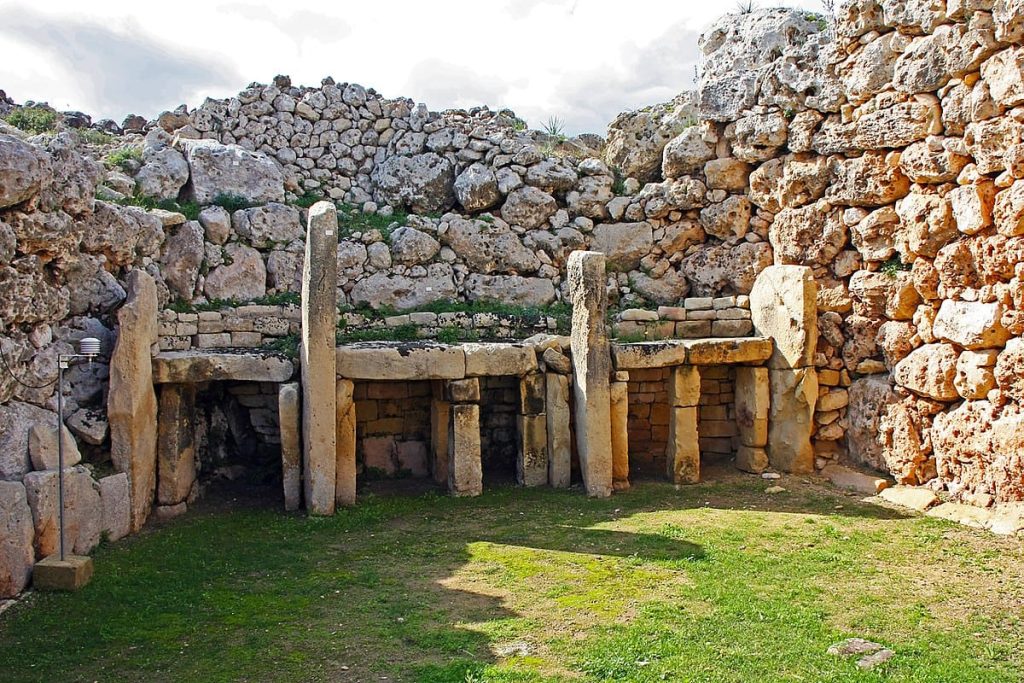
23. Royal Palace of Ebla
One of the oldest buildings in the world, The ancient Royal Palace of Ebla, situated in present-day Syria’s city of Ebla, dates back to the 24th century BC, making it a significant edifice in the ancient Near East. As one of the foremost palaces of its time, this expansive complex served as both the residence and administrative hub for Eblaite kings. Comprising chambers, halls, and adorned courtyards featuring reliefs and inscriptions, the palace stands out for its well-preserved notes. These offer invaluable glimpses into the history, culture, and everyday existence of the Eblaite civilization, providing a unique window into the past of this ancient society.
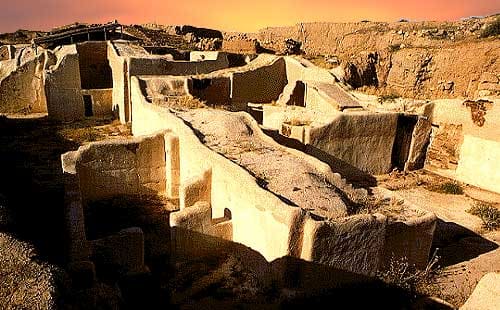
Image Source: Wikimedia
24. Great Pyramid of Giza
Situated in Giza, Egypt, the Great Pyramid is the eldest and largest among the trio in the Giza Necropolis, standing as an iconic ancient world landmark. Constructed around the 26th century BC, it serves as the monumental tomb of Pharaoh Khufu. It is the epitome of the architectural style of the Old Kingdom. Crafted from limestone blocks, this colossal structure reaches a towering height of 147 meters, reigning as the world’s tallest building for over 4000 years. Its enduring presence highlights both the historical significance and engineering prowess of the ancient Egyptians, solidifying the Great Pyramid’s place as an enduring symbol of their civilization. It is one of the oldest buildings in the world.

25. Pyramid of Khendjer
The Pyramid of Khendjer, situated in Saqqara, Egypt, was erected by Pharaoh Khendjer around 1332 to 1323 BC. It was a tribute to his mortuary cult. Crafted from limestone, this ancient Egyptian pyramid exemplifies the architectural style of the Middle Kingdom. Its structure encompasses chambers, halls, and corridors adorned with intricately preserved reliefs and inscriptions. Notably, these well-maintained depictions offer invaluable insights into Khendjer’s reign and the everyday existence of ancient Egyptians. The pyramid stands as a testament to the rich history and cultural practices of this bygone era, allowing modern scholars to unravel the mysteries of Egypt’s past.
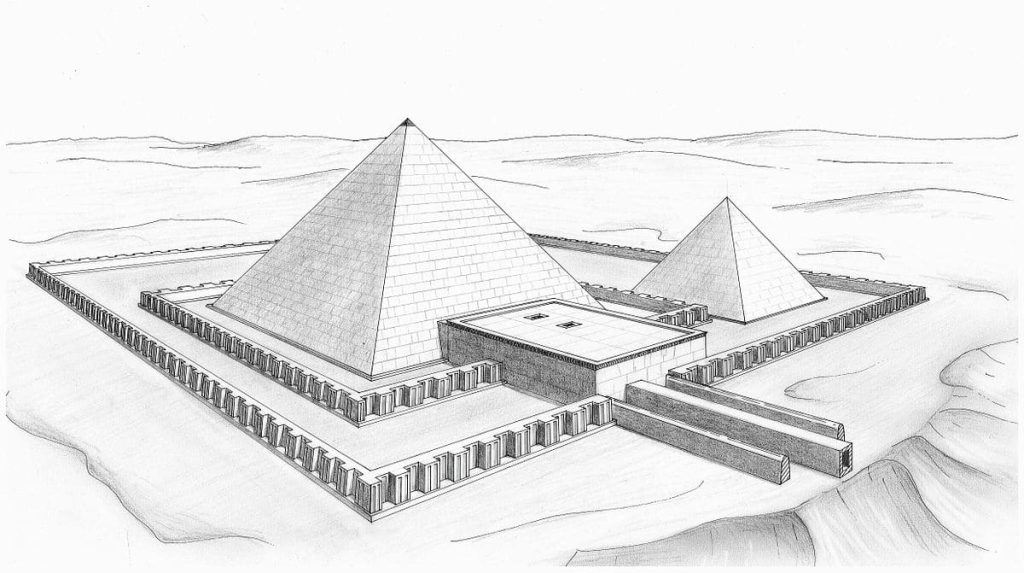
Image Source: Wikimedia
These are the list of the top 25 oldest buildings in the world. Kindly share and post your comments.
